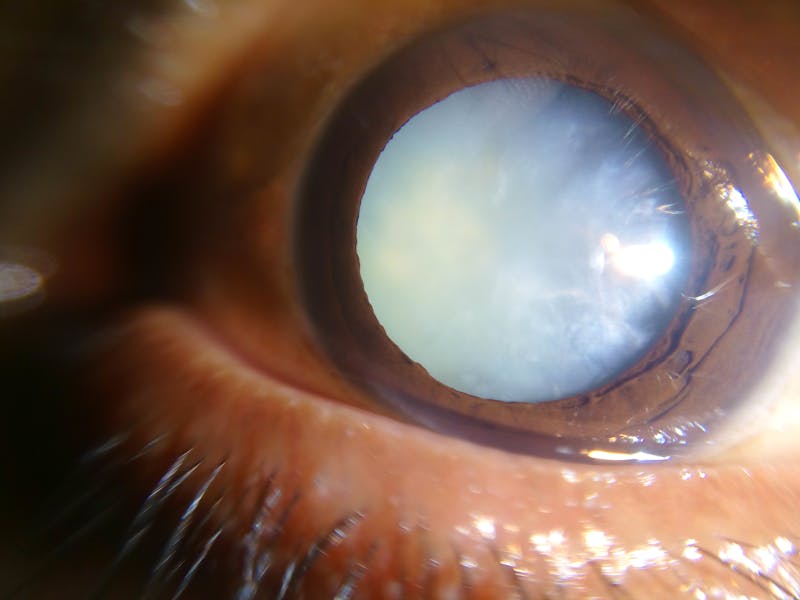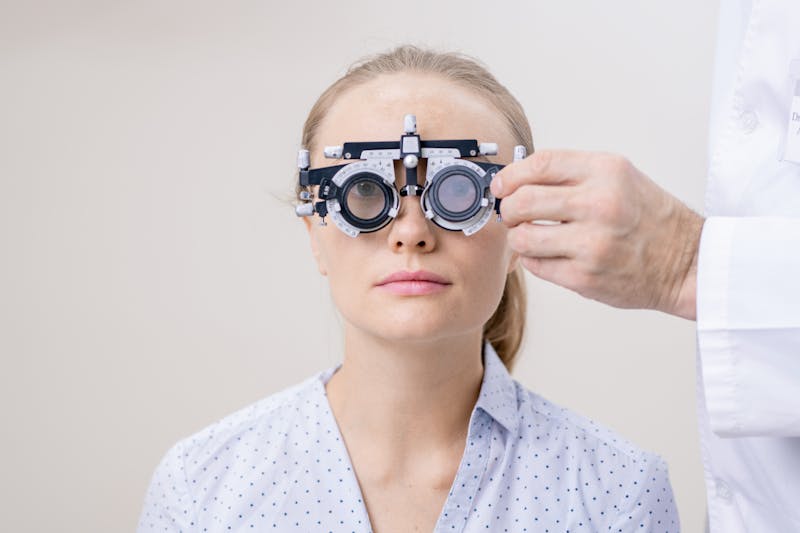LASIK

LASIK is an acronym for laser-assisted in-situ keratomileusis. It is a type of laser eye surgery that permanently reshapes the cornea to correct refractive errors.
LASIK is performed on the cornea, which is the clear, transparent layer in the front of the eye. It focuses rays of light directly on the retina, which is present at the back of the eye. When the cornea is irregularly shaped, the rays of light are not focused precisely on the retina. This results in the following refractive errors:
- Nearsightedness (myopia) - This results when the cornea is more curved than normal causing the light rays to focus in front of the retina. There is clear, close vision but blurry distance vision.
- Farsightedness (hyperopia) - This results when the cornea is flatter than normal, causing the light rays to focus behind the retina. There is clear distance vision but blurry close vision.
- Astigmatism – The cornea is irregularly shaped, so the light rays are never brought to a point focus and the resulting image is blurry.
Procedure
Before getting the procedure done, it is important to be off contact lenses. The rigid gas-permeable contact lenses, need to be taken off for at least 3 weeks before the evaluation. The other types of contact lenses need to be taken off for at least 3 days prior to the evaluation.
After a rigorous preoperative work up, it is determined who is an eligible candidate for LASIK. LASIK is FDA-approved for people aged 18 and older who’ve had a stable refraction (stable eyeglass or contact lens prescription) for at least two years in a row, and whose eyes are generally healthy.
The preoperative examination includes an accurate assessment of the refractive error to be corrected; pachymetry to measure the corneal thickness; topography to assess the precise shape of the cornea and a dilated examination of the back of the eye, to exclude any retinal pathology. Some eye surgeons use newer wave front- and topography-guided technologies to create a customized map of the cornea, which produces a more precise vision correction.
Before starting LASIK, the eye is first numbed with anesthetizing eye drops. The surgeon creates a thin partial thickness corneal flap, using a femtosecond laser or a blade called a microkeratome. The doctor then pulls back the flap to reveal the rest of the cornea. It will seal on its own, without stitches, in the days following the procedure.
Thereafter, the laser burns away small amounts of tissue to reshape the cornea so that it focuses light more directly on the retina. Usually there is no pain during the procedure, although some people may feel pressure during the procedure. The entire LASIK surgery takes about 15 minutes for both eyes.
Contraindications for LASIK
Certain people may not be good candidates for this procedure, including those who have:
- An active eye infection or injury
- Age less than 18 years
- Unstable refraction
- A female who is pregnant or lactating
- Very thin and uneven corneas
- Glaucoma
- Dense cataracts
- Severe dry eyes
- Uncontrolled diabetes
- A very high refractive error, such as severe nearsightedness
- Certain autoimmune diseases like Lupus or Rheumatoid Arthritis.
Alternatives to LASIK
The four alternatives to traditional LASIK eye surgery are:
LASEK: With LASEK, a very superficial epithelial cut is made in the cornea with a dull blade and then an alcohol solution is used to loosen the flap and hinge it back after the cut is made. LASEK is safer for patients with thin corneas compared to traditional LASIK. Then the laser reshapes the cornea, as for traditional LASIK. Following the procedure, a bandage contact lens is used for recovery of the eye. The downfall, when compared to a regular LASIK procedure, is that the recovery time is not as fast.
Epi-LASIK: Like LASEK, Epi-LASIK is not as invasive as traditional LASIK. In this procedure a plastic blade lifts the epithelium to separate it from the inner cornea (alcohol is not used for epithelial separation). A laser then reshapes the inner corneal tissue. After that, the epithelial flap is replaced and a protective contact lens is inserted to help the eye recover. This procedure is ideal for patients with thin corneas who desire a faster recovery time.
While LASIK remains the most popular option for correcting myopia and hyperopia, if there is a very high refractive error or an abnormal cornea, lens-based refractive surgery such as clear lens extraction or phakic IOL implantation may be a better alternative.
Phakic Intraocular Lens Implants: A plastic or silicone lens is implanted permanently inside the eye, without removing the natural lens. This reduces a person’s need for glasses or contact lenses. The procedure involves making a small incision in the cornea. The phakic lens is inserted through this incision and placed just in front of or just behind the iris. All phakic lenses approved by the FDA are for the correction of nearsightedness (myopia). Implantation of phakic IOLs forgoes the risks of corneal ectasia (corneal weakening and bulging) and retinal detachment associated with LASIK and refractive lens exchange, respectively.
Refractive Lens Exchange Surgery: Refractive lens exchange is typically for people with presbyopia or extreme farsightedness, for whom LASIK, PRK or phakic IOL surgery generally are not suitable. Unlike the corneal ablative procedures like LASIK, epi-LASIK, LASEK or PRK, refractive lens exchange can correct almost any degree of hyperopia, and visual acuity after RLE surgery often is better than LASIK and PRK outcomes in cases of moderate and high hyperopia. The natural lens of the eye is removed and it is replaced with an artificial intraocular lens.
For myopes, RLE is usually performed only if they are not suitable for any other vision correction surgery. This is because myopes have a higher risk of retinal detachment during clear lens extraction.
Risks and benefits of LASIK
LASIK has been around for over 25 years. About 96% of patients reach their visual goals afterward. An enhancement can raise this number even more. The main benefit of this procedure is the rapid and predictable visual recovery with minimal discomfort. The need for glasses and contact lenses is almost totally eliminated after the procedure.
Some patients have discomfort on the first day or two after LASIK eye surgery. Other side effects are rare and usually go away over time. They include:
- Glare
- Seeing halos around images
- Trouble driving at night
- Fluctuating vision
- Dry eyes
- Scratchy eyes
- Light sensitivity
Rarely, one may lose one’s “best” correctable vision (that is the highest degree of vision that one had with contacts or eyeglasses) after LASIK. There is also a rare possibility of loss of vision after LASIK due to infection, scarring or poor healing.
DISCLAIMER
This web page provides general information and discussions about health, medicine and related subjects. The information and other content provided on this website, or in any linked materials, are not intended and should not be construed as medical advice, nor is the information a substitute for professional medical expertise or treatment.
The content is for information purpose only and is not a medical advice. Qualified doctors have gathered information from reputable sources; however Credence Medicure Corporation is not responsible for errors or omissions in reporting or explanations. No individual should use the information, resources and tools contained herein to self diagnose or self treat any medical condition.
If you or any other person has a medical concern, you should consult with your health care provider or seek other professional medical treatment. Never disregard professional medical advice or delay in seeking it because of something that have read on this blog or in any linked materials. If you think you may have a medical emergency, call your doctor or emergency services immediately.
The opinions and views expressed on this blog and website have no relation to those of any academic, hospital, health practice or other institution. Credence Medicure Corporation gives no assurance or warranty regarding the accuracy, timeliness or applicability of the content.

